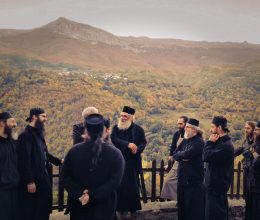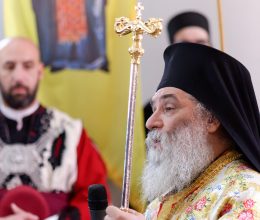“I was welcomed as one of their own. At no point did I feel rejected, neither by the monks nor by anyone else. Never once was I asked to change my Muslim faith,” says A.A., a young Albanian from western Macedonia, who has been staying at the renowned Bigorski Monastery for several months, undergoing treatment for drug addiction. He shares that he had been a long-term addict of the hard drug heroin, which had brought him to the brink of life. Despite multiple previous attempts to break free from his addiction, none had been successful. He had heard about the experiences of several fellow Albanians who had stayed at the Orthodox monastery and managed to overcome their dependencies. Inspired by their stories, he decided to come to this prominent Christian sanctuary. Now, he says, he feels better.
“I feel that my will to free myself from drugs is growing stronger every day. I fulfill all the tasks assigned to me and hope that the day will come when I can say I am free from addiction and able to live a normal life,” he says.
A.A. is not alone at the monastery, which for the past fifteen years has hosted a special program dedicated to treating drug addiction. Over the years, hundreds of young people have passed through the program, and the groups usually consist of 20 to 30 individuals. While the majority of participants come from the Orthodox Christian faith, the groups often include young people of Islamic faith as well.
Drug addiction has been on the rise in recent years in the country, affecting people across all ethnic and religious lines—it is a challenge faced by all citizens. The results achieved so far suggest that the brotherhood of the monastery has discovered a unique and effective way to help young people, regardless of their faith—Orthodox, Muslim, or otherwise—break free from addiction.
“The abbot of the monastery, Father Parthenius, welcomed me with immense love just as I am, like a true father. He always gives me special attention, sometimes even sacrificing parts of his time and numerous responsibilities to focus on me when I have a serious need to talk. The other monks treat me like a close friend. My national and religious identity has never been an obstacle to their positive attitude toward me,” A.A. explains.
In addition to the many young Albanians from various municipalities in Macedonia who have come to the monastery for treatment, other individuals of Islamic faith have also sought help. Among them were a few Roma and even one Palestinian. Like the others, they are being treated not only for drug addiction but also for dependencies on alcohol, tobacco, and gambling.
The Bigorski Monastery is a sanctuary that is respected in this region by both the Christian and Muslim populations, who often visit during major religious holidays.
It is estimated that in Macedonia, a new drug user appears every 18 hours, amounting to around 500 annually. The number of addicts is approximately 11,000, though experts believe the unofficial figure is six times higher. In recent years, the age at which individuals begin using drugs has dropped to as low as eight or nine years. Drug use typically begins out of curiosity, a desire to fit in socially, or as an escape during moments of depression or life failures.
Psychologists indicate that most addicts are eager to talk about their problems, seek solutions, and want to recover. This is confirmed by the practices at the Bigorski Monastery, where fulfilling responsibilities is an essential part of the therapy.
“Those in recovery who stay at the monastery are required to respect its order, attend church services and communal meals, assist with obediences (work duties), and conduct themselves responsibly and appropriately. The length of their stay at the monastery depends on their progress in overcoming psycho-somatic crises, but it usually lasts from six to twelve months, and sometimes longer. The goal is not only to free them from the chains of addiction but also to help them reintegrate into society as spiritually healthy individuals who can contribute positively to the community,” the monastery explains.
The monastery emphasizes that its support for these individuals does not end after they leave. Efforts are made to ensure they can stand on solid ground once outside.
“With God’s help, the treatment is truly successful. Over the past 15 years, since Father Parthenius welcomed the first drug addict and began this social mission of the monastery, hundreds of souls have been healed,” the Bigorski Monastery shared.
ATTENDING SERVICES
Recovering addicts of other faiths who undergo treatment at the monastery are required to attend the regular church services held in the temple.
“However, under no circumstances are they asked to change their religious beliefs. In fact, in accordance with the teachings of the Lord Jesus Christ and His Holy Orthodox Church, the sacred Bigorski Monastery respects the free will and right of choice of every individual, regardless of their religious, national, or political beliefs,” the monastic brotherhood states.













